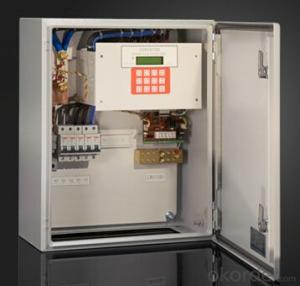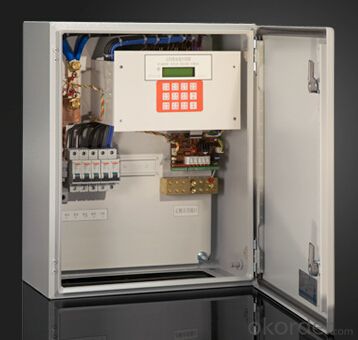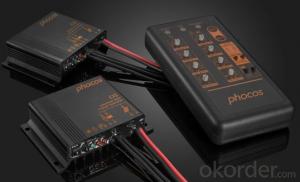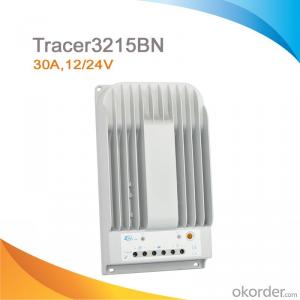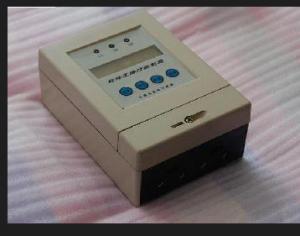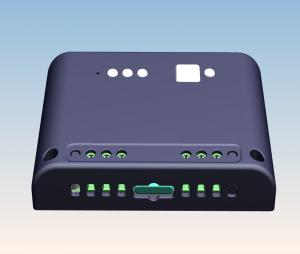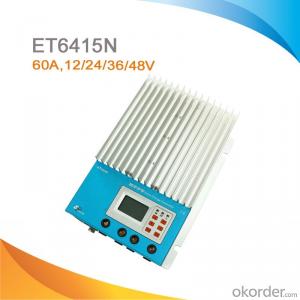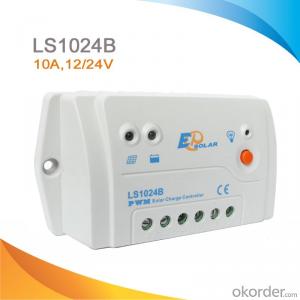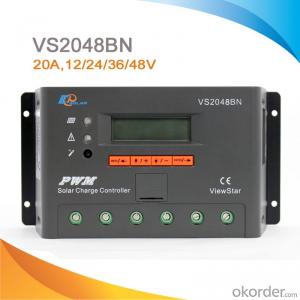Goldline Solar Controllers SPS Series (100 – 300 A) High-End Solar Regulation System
- Loading Port:
- China Main Port
- Payment Terms:
- TT OR LC
- Min Order Qty:
- -
- Supply Capability:
- 10000 unit/month
OKorder Service Pledge
OKorder Financial Service
You Might Also Like
· 12, 24 and 48 V versions available
· R5232/485 data interface
· Fully programmable
· Designed for Telecom applications
· Ultra low noise emissions due to bank switching design
· Almost any accessory feature possible
·
· The SPS series Solar Regulation System is an advanced electronic control unit for solar power supplies in remote locations. It will prevent overcharging, reduce electrolyte loss and stop over discharge. This will extend battery life and reduce maintenance.
· State of the art technology has been combined with simple modular construction to create a system with better performance and more features than any other controller in its class. All control levels are fully adjustable and can be changed by remote control. They are flexible in use, easy to service and are powering telecommunications in some of the most remote parts of the world.
- Q: How does a solar controller handle battery under-voltage disconnect recovery?
- A solar controller handles battery under-voltage disconnect recovery by monitoring the battery voltage and disconnecting the load when the voltage drops below a certain threshold. Once the battery voltage recovers and reaches a safe level, the solar controller re-connects the load to ensure the battery is protected from further discharge.
- Q: Can a solar controller be used with solar-powered pumps?
- Yes, a solar controller can be used with solar-powered pumps. A solar controller helps regulate and optimize the power output from solar panels, ensuring that the energy generated is efficiently used by the pump. It helps manage the charging and discharging of batteries, protects against overcharging or over-discharging, and can provide additional monitoring and control features for the system.
- Q: What is the role of a battery low voltage disconnect function in a solar controller?
- The role of a battery low voltage disconnect function in a solar controller is to protect the battery from being over-discharged. It automatically cuts off the power supply from the solar panels to the battery when the battery voltage drops below a certain threshold. This helps extend the battery's lifespan and ensures that there is always enough charge left for essential loads.
- Q: Is it necessary to have a solar controller for a small solar system?
- Yes, it is necessary to have a solar controller for a small solar system. A solar controller acts as a regulator between the solar panels and the batteries, ensuring that the batteries are not overcharged or damaged. It also helps optimize the charging process, maximizing the efficiency and lifespan of the system. Additionally, solar controllers often offer features like load control and monitoring, providing further protection and control over the system.
- Q: Can a solar controller be used in a solar-powered electric helicopter system?
- Yes, a solar controller can be used in a solar-powered electric helicopter system. A solar controller is an essential component that regulates the charging and discharging of batteries in a solar power system. In a solar-powered electric helicopter system, the solar controller would optimize the energy harvested from solar panels and ensure that the batteries are charged efficiently. This helps in maintaining a consistent power supply and maximizing the helicopter's flight time.
- Q: What is the difference between a solar controller and a solar regulator?
- The terms "solar controller" and "solar regulator" can be used interchangeably to describe the device that regulates and controls the charging process of a solar panel system. Their main purpose is to prevent the batteries from overcharging by regulating the current flow from the solar panels. This is crucial for maintaining the batteries' health and lifespan. Typically, solar controllers or regulators are installed between the solar panels and the battery bank in a solar power system. They are available in various types and sizes, depending on the specific application and system requirements. Common types include PWM controllers and MPPT controllers. PWM controllers are simpler and less expensive, while MPPT controllers are more advanced and efficient in maximizing the power output from the solar panels. In essence, whether referred to as a "solar controller" or "solar regulator," both terms describe the same device responsible for managing and controlling the charging process in a solar panel system. Their goal is to ensure optimal performance and battery health.
- Q: Can a solar controller be used in a solar-powered Mars colonization mission?
- Yes, a solar controller can be used in a solar-powered Mars colonization mission. A solar controller is an essential component of a solar power system as it regulates the amount of electrical energy flowing between the solar panels and the batteries. This ensures the batteries are charged efficiently and prevents overcharging or damage to the system. Therefore, a solar controller would be vital in managing the solar power system on Mars and ensuring a stable and reliable source of energy for the colonization mission.
- Q: How does a solar controller prevent overvoltage damage to batteries?
- A solar controller prevents overvoltage damage to batteries by regulating the amount of voltage and current being supplied to the batteries from the solar panels. It continuously monitors the battery voltage and disconnects the charging source when the battery reaches its maximum voltage level, protecting it from overcharging and potential damage.
- Q: Can a solar controller be used with solar-powered remote monitoring systems?
- Yes, a solar controller can be used with solar-powered remote monitoring systems. A solar controller is designed to regulate the charging and discharging of batteries in a solar power system. It ensures that the batteries are charged efficiently and protects them from overcharging or discharging. Therefore, it can effectively control the solar power supply to remote monitoring systems, ensuring reliable and continuous operation.
- Q: What is the output voltage range of a solar controller?
- The output voltage range of a solar controller typically varies and depends on the specific model and manufacturer. However, in general, most solar controllers have an output voltage range of 12-48 volts, which is compatible with common battery systems used in solar power applications.
Send your message to us
Goldline Solar Controllers SPS Series (100 – 300 A) High-End Solar Regulation System
- Loading Port:
- China Main Port
- Payment Terms:
- TT OR LC
- Min Order Qty:
- -
- Supply Capability:
- 10000 unit/month
OKorder Service Pledge
OKorder Financial Service
Similar products
Hot products
Hot Searches
Related keywords
